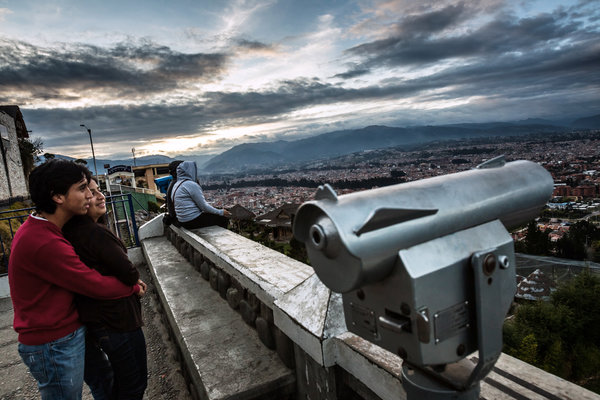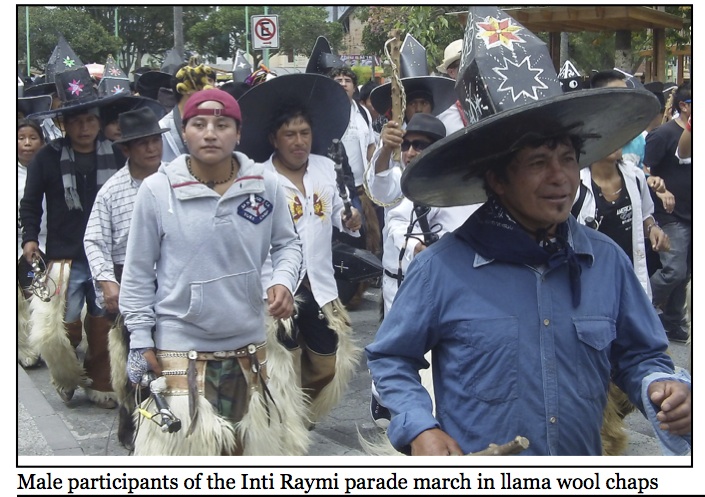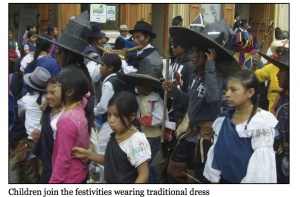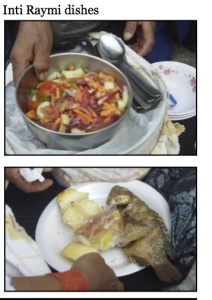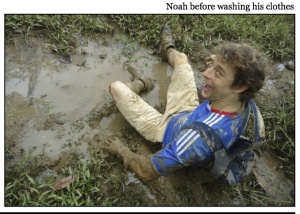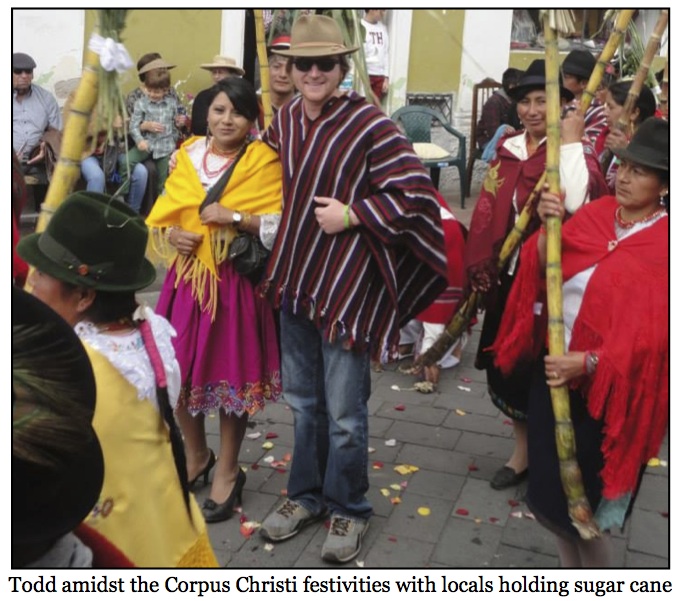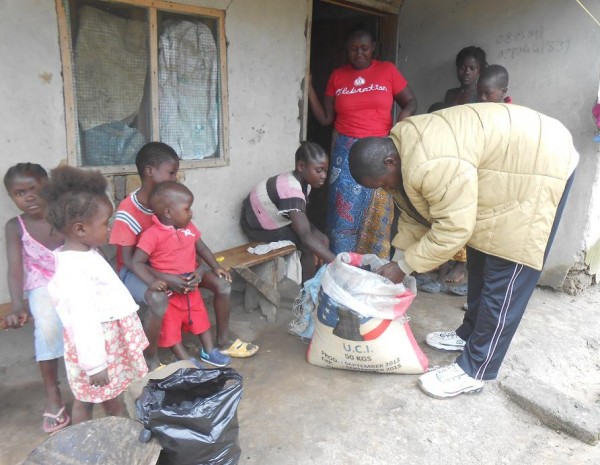NYTIMES travel story on Cuenca
Here is a travel story from the New York Times on the author’s drive down to Cuenca. The whole thing is a worth a read. Excerpts below:
Two and a half hours and still no sign of llamas. We should have been winding our way through lush forests and mountain lakes instead of the never-ending banana plantations we continued to see outside our rented four-wheel drive. It was time to turn our dying iPhone’s navigation system back on and confirm the inevitable. Somewhere between sprawling Guayaquil and the quaint cobblestone streets of Cuenca my husband and I had made a wrong turn. And now, on the second leg of our Ecuadorean road trip, with my mother consoling our hungry 4-year-old in the back seat, we had a decision to make: Do we turn back and take the well-trodden route through Cajas National Park we had originally planned to drive, or push onward, not knowing what the road conditions might be ahead, how long our journey would take or if our daughter would nap along the way?
On our nine-day trip in July we focused on three of these offerings — beaches, mountains and colonial charm. The plan was to head north along the Pacific coast, then head east into the Andean highlands for high-altitude trails before spending time with family in the beautiful colonial city of Cuenca, where my mother was born. (We ended up doing it all, but not in that order, given our detour.)
We started out on a Saturday heading westward from Guayaquil, Ecuador’s largest city, and then north along the coastal highway promoted variously as La Ruta del Sol (Route of the Sun) or Spondylus Route, named for a spiny shell that was once used as currency by indigenous groups. The route is Ecuador’s equivalent of California’s Pacific Coast Highway except with speed bumps, stray dogs, donkeys and far fewer cars, extending almost the entire coastline from the Peruvian border to Esmeraldas in the north. Along the way it passes through fishing villages, resorts, tropical dry forest and deserted golden beaches.
____
Driving in Ecuador is not for the faint of heart. While the roads we took were well maintained and the speed limit was often respected, plenty of drivers ignore some basic rules of the road — like slowing down and forming lines along blind, mountainous hairpin curves lined with signs that read “PELIGROSO!” (Dangerous!)
When stuck behind a slow-moving truck on such a stretch, it is not uncommon for the car behind you to attempt to pass. As that car speeds up, the driver in the vehicle behind it will often decide to pass both you and the other car. Then a third car will inevitably race ahead. Watching this maneuver, you will pray. If those prayers are answered, a tractor-trailer will not come barreling down the other side of the highway at that moment. If it does, you will be forced to slam on the brakes and allow those three passing cars to somehow fit into one lane in front of you lest you all fall off the cliff.
Then there are the unexpected encounters with animals. Among the many that sent us swerving and slamming on the brakes were stray dogs, horses, donkeys, a horned cow and the proverbial chicken crossing the road.
By the time we reached Cuenca, roughly 8,000 feet above sea level, we were ready to ditch the car. Thankfully, its historic center — a Unesco World Heritage site filled with terra-cotta-tile roofs, domed churches, plazas, tempting bakeries and cobblestone streets, all set above the grassy banks of the Tomebamba river — is a perfect place for strolling.
When we arrived around 4 p.m., most restaurants were closed for lunch and not yet open for dinner. So we hauled our starving child to Raymipampa, which serves uninspiring Ecuadorean fare in a superb location: facing Parque Abdón Calderón, the city’s central square.
—
After a satisfying meal of grilled trout, we climbed back into the car. The road climbed higher toward Cajas National Park. Pines and eucalyptus gave way to high grassland, scrubby bushes and gnarly trees clinging to a jagged mountain landscape dotted with lakes. Pulling through the gated park entrance my daughter suddenly gasped, “a llama!”
Standing regally on the side of the road, its fluffy gray head held high, the llama batted its long eyelashes at us. Wild llamas, reintroduced to the park in the 1980s, are perfectly suited to the area’s fickle weather. We had been warned to dress in layers and were glad we had bundled up with wool hats and scarves when we stepped onto a hiking trail off the main road.
Cajas, which spans about 110 square miles and ranges in altitude between 9,500 and 14,400 feet, is roughly twice the elevation of Denver. We huffed and puffed up a gentle slope alongside a glassy lake. Signs offered not-so gentle reminders to “walk slowly” to avoid altitude sickness and avoid long treks “if you suffer of hear problems.” The ground was a spongy carpet of succulent plants. Gnarly quinoa trees, or Polylepis, also known as paper trees for their flaky bark, were entwined in tangled groves.
In the cold, quiet wilderness of the Andean páramo the heat and golden sands of the Ecuadorean coast seemed a million miles away. But here we were at the end of our trip, winking at llamas high in the Andes. To think that only days before, we had been waving to humpback whales.
NYTIMES travel story on Cuenca Read More »

